> a statistical overview
Georeferenced census data provided indicators on social structure, age distribution, school levels, labor and building indicators.
Data analysis was developed at the local and metropolitan scales, providing comparative reference and a better perspective in regard to the wider territory.

> topography and hydrography
Morphological analysis highlights the fundamental presence of a complex topography. Deep valleys and a network of water lines shape the urban landscape and determine the position of the main infrastructural networks.
The urban fabric is thus constrained under the influence of the site, often resulting in barriers and difficulty of accessibility. On the other hand, these lines of landscape are key structures for ecological continuity, green infrastructure and new forms of public space.

> evolution in time
Today’s urban landscape in metropolitan territories if often read as difficult to understand and lacking structure. The evolution analysis of urban development highlights the stages through which this process occurs. Such approach can be used to trace structural elements, areas of critical change and representative forms of urban fabric, associated with the socio-spatial of specific time periods. 
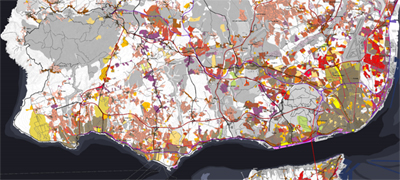
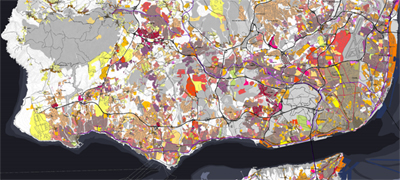
> land subdivision processes
Urban development in metropolitan Lisbon is a highly complex and diversified process. Especially after the 1950’s, urban growth has been pushed through along the main railroad lines, followed by motorways since the 1960’s. However, expansion was rarely framed by comprehensive urban plans. It often relied on private-led piece-meal land subdivision initiatives.
Former rustic plot patterns and the land subdivision processes provide key insight to decode today’s splintered urban landscape.


> patterns of urban fabric
As is often the case in Lisbon’s metropolitan territory, Cacém/Massamá is characterized as a highly diverse urban fabric mosaic intertwined with a frail and discontinuous patchwork of open space and rustic plot patterns. These patterns are decoded through identification and systematization in terms of urban morphology and building typology.
Along with this morphological perspective, real-estate and land-use rationales are cross-referenced, in order to highlight the spatial production processes that shape these settlements.
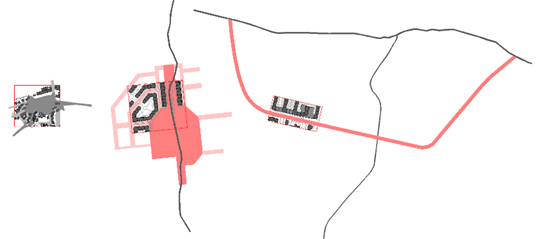


> public space configuration
Acknowledged as one of the most frail systems in suburban development, public space is addressed with a focus on a multi-criteria lens: public/private domain relationship, uses and spatial characteristics, ground-level transitions, topographic adjustment.
This data offers a basis from which more cohesive and continuous design-oriented approaches will be developed.
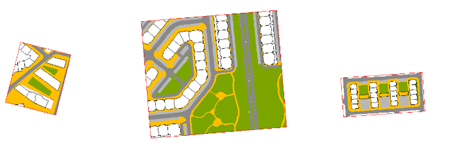
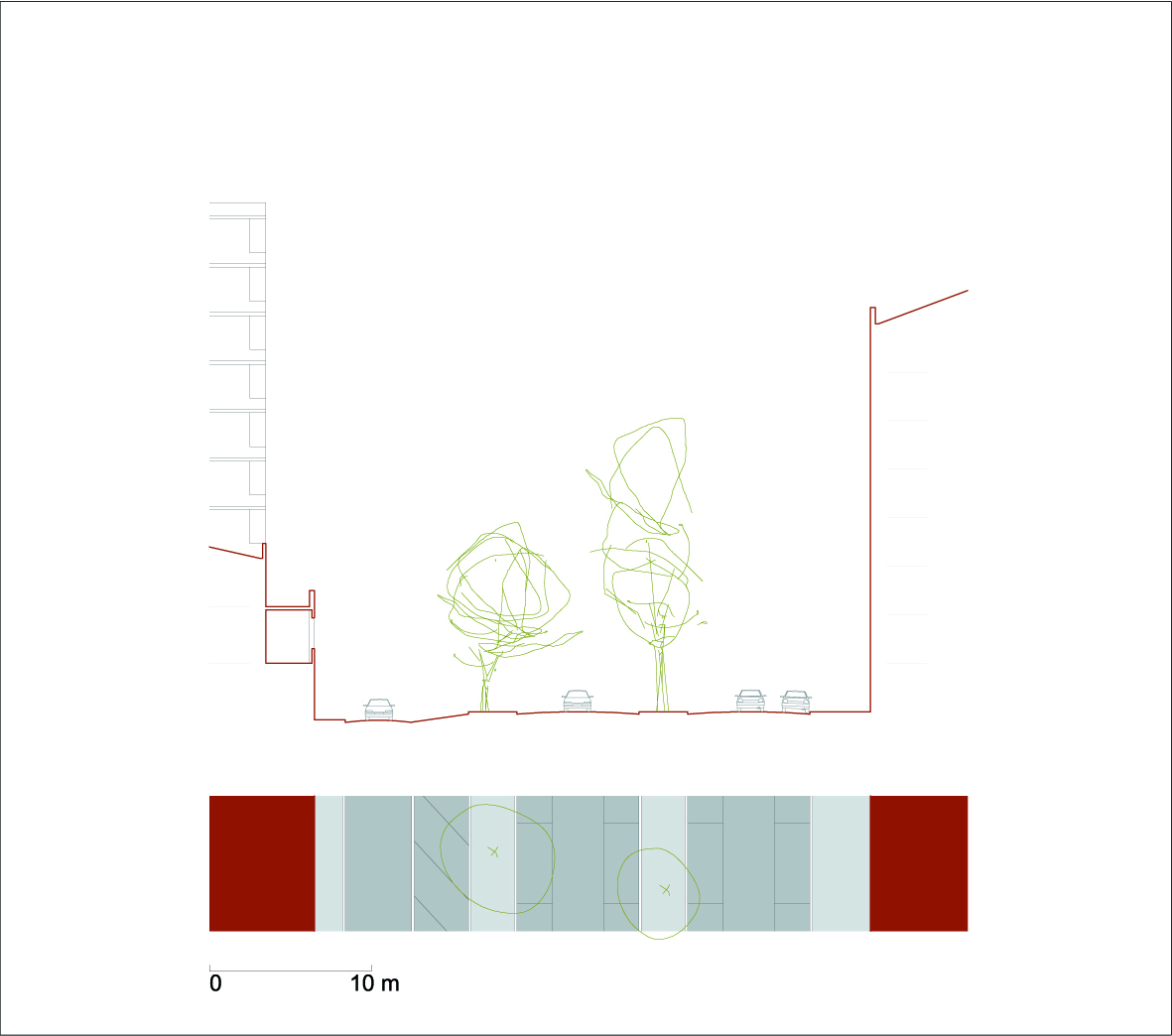
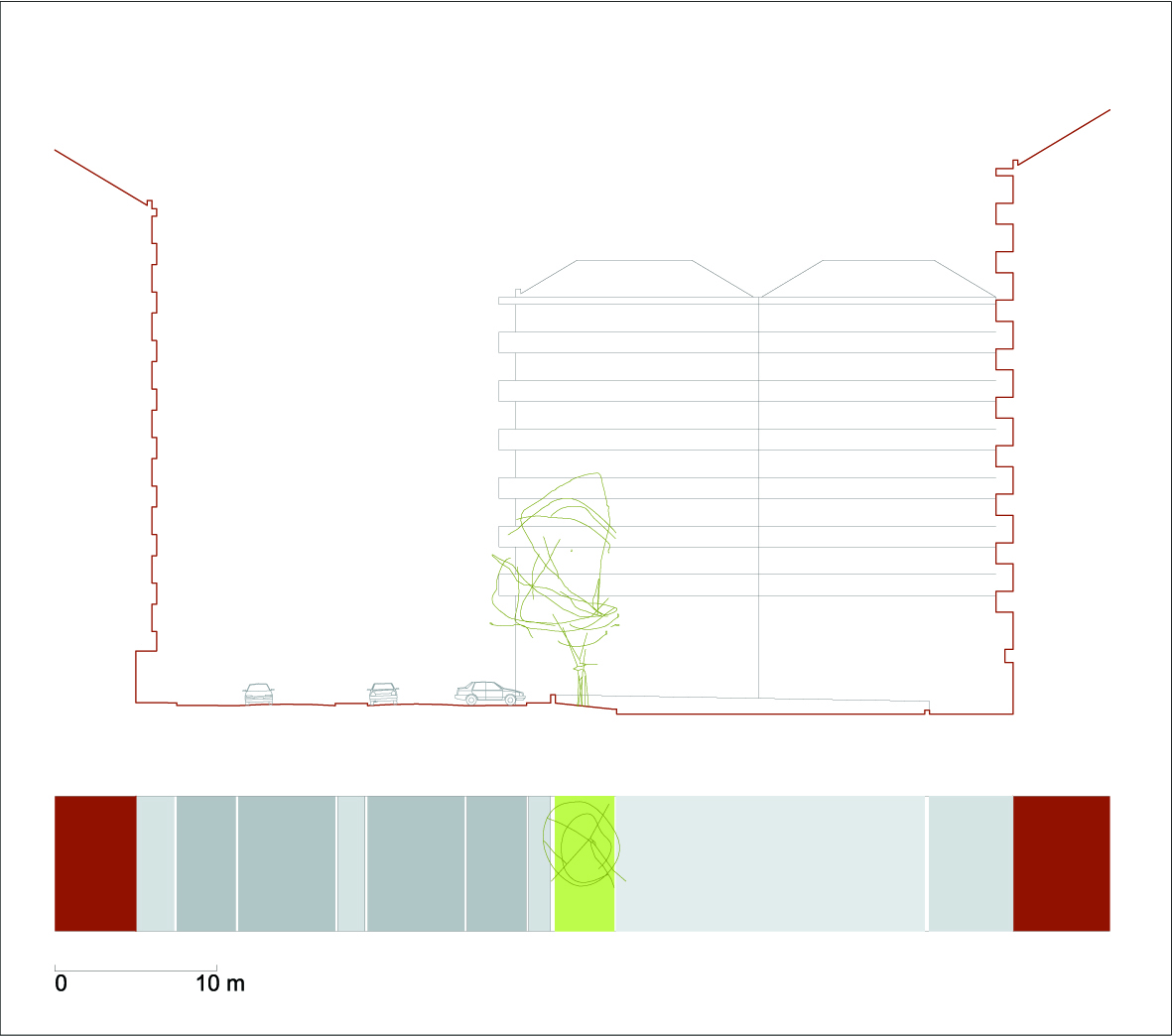
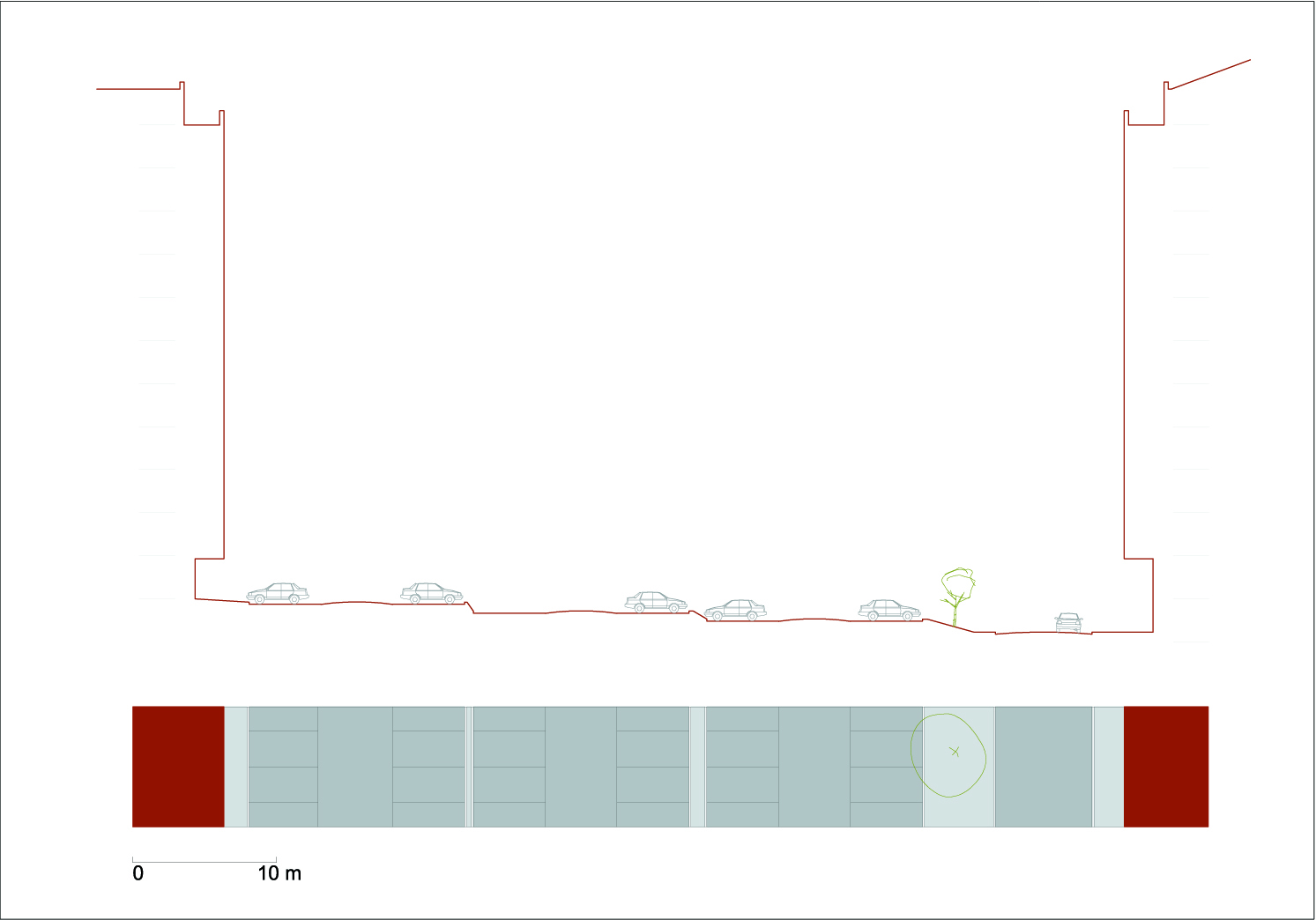
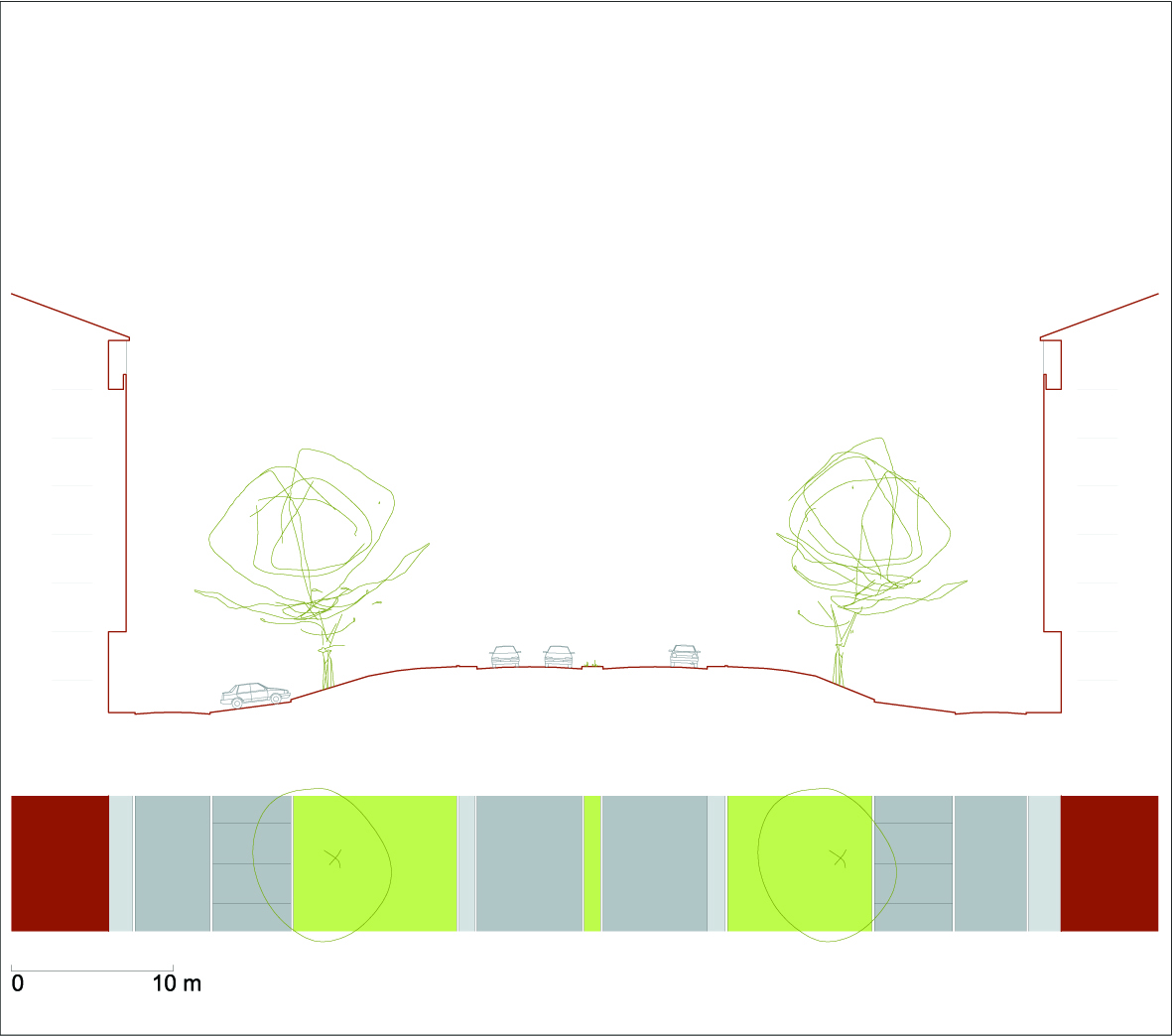
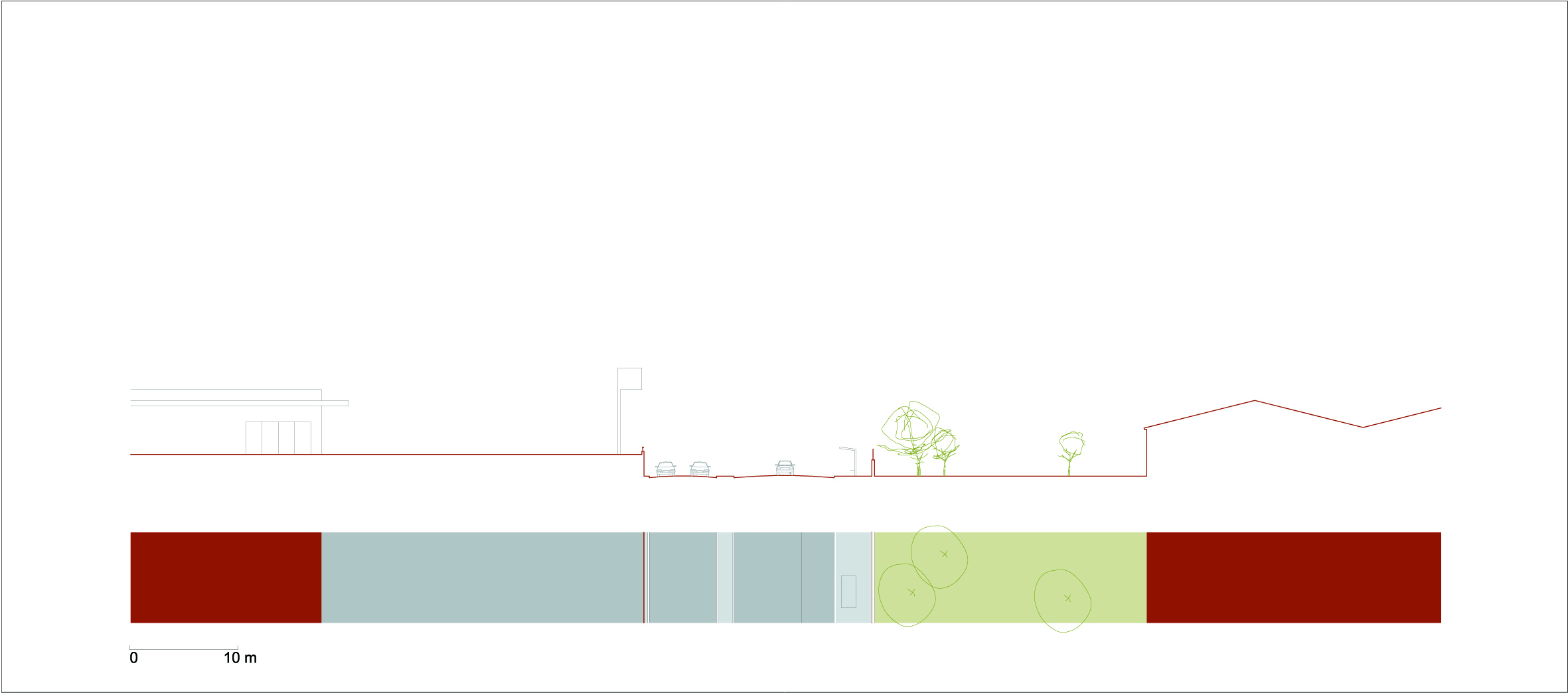
> open space and green infrastructure
Large spaces of vacant land, formerly occupied by agriculture, stand between the study area’s settlements. These spaces, which until recently were predominantly seen as economic assets waiting for continuous urban growth, are increasingly acknowledged as holding alternative potential. Green infrastructure, ecological services, renaturalization and urban agriculture and forestry are key concepts in addressing their role as fundamental resources for metropolitan metabolism, resilience and spatial qualification.
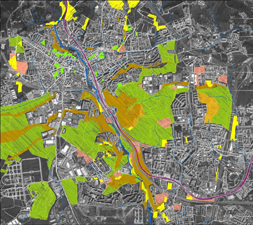
> the planning perspective
Regional and municipal planning documents identify existing land use guidelines and transformation perspectives. On one hand, the evolution of planning legislation has impacted heavily on morphological characters, such as public space, roads and parking and facilities provision. On the other hand, it represents the conceptual models that are used as references by public authorities to control and guide territorial dynamics. Transition from a growth-oriented perspective towards a more connective and cohesive perspective is perceived in recent years.
